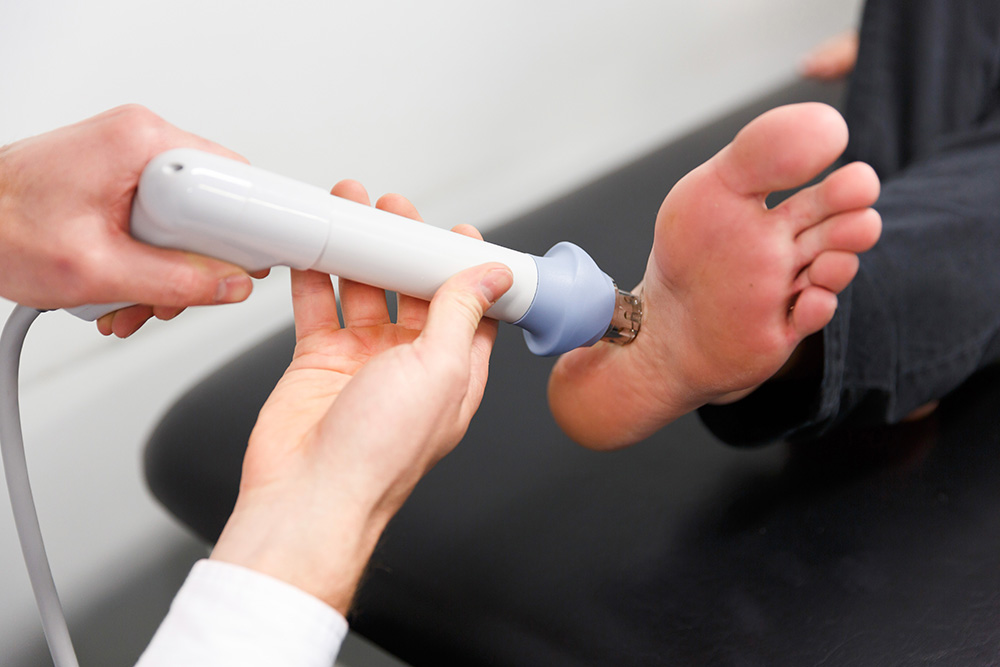Clinical Podiatry
Our centres provide the full scope of clinical podiatry including comprehensive foot assessments, various treatments and surgery.
Simply answer these questions.
No referral is needed!
Click or tap on a previous answer to change it.
Please note, your appointment time cannot be guaranteed until you submit the form.
Reset your local clinic selection.
Find your nearest My FootDr clinic with your device's location or post code/suburb.
c See our full list of locations
If the results do not seem correct, you may need to add your city or state to the search. Your GPS location is never stored on our servers.

Our centres provide the full scope of clinical podiatry including comprehensive foot assessments, various treatments and surgery.

At My FootDr podiatry centres, we use shockwave therapy successfully every day on Achilles tendonitis, plantar fasciitis, painful trigger points and other musculoskeletal disorders of the foot and lower limb.
Having warts on the bottom of the feet that won’t go away is a frustrating, ongoing problem that can last months or even years. They can make walking unpleasant but also painful. While many people are told that they should just wait for the wart to go away on its own, or to use padding in the meantime that only ever provides a little temporary relief, the reality is that when left untreated, warts can stick around for a very long time.
What are plantar warts and how are they caused?
Plantar warts are small, rough, round growths that are medically known as verrucae and present on the bottom of the foot. They’re caused by a virus called the Human Papilloma Virus (HPV) in the outer skin layer and are often contracted in childhood. Once you’ve contracted the virus, you’ll always have it in your system, so plantar warts may pop up spontaneously throughout your lifetime.

Ingrown toenails on a woman's foot, pain in the big toe closeup
Ingrown toenails, also known as onychocryptosis, are a common and painful complaint. A true ingrown toenail is when a spike or edge of nail pierces the skin at the nail edge. This is known as the sulcus and can cause inflammation and even lead to infection.
There are a variety of factors that can cause ingrown toenails. The most common cause is due to improper cutting of your toenail and leaving a spike of nail in the sulcus. It can also be a result of a curved nail, known as an involuted nail, from external pressure.
If you are experiencing pain, redness, and swelling around your toenail, it may be time to consider seeing one of our podiatrists. With over 30 years of combined experience in treating foot and ankle conditions, we have successfully treated many cases of ingrown toenails.
Approximately 200,000 Australians are hospitalised every year as a result of having a fall. Bone fractures are the most common type of injury resulting from a fall. While falls are most common in those aged over 65, young males aged 5-24 years are also particularly prone to falls.
Book an appointment online or call us on 1800 366 837.